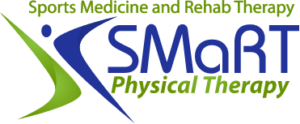Headaches Are Difficult to Deal With – Physical Therapy Can Ease the Pain

Ready to Say Goodbye to Chronic Headaches?
Did you know that headaches are the third most common pain complaint? Headaches are extremely common and can be so debilitating that they affect a person’s quality of life. Physical therapy can help you find relief.
The phrase “sick headache” may have been coined to describe how you feel today – and every day. A single headache can be upsetting enough, but frequent or constant headache pain can render you completely incapacitated.
Many of these headaches have underlying musculoskeletal or biochemical causes, which means they can be resolved with the proper treatment.
Physical therapy is frequently just what the doctor ordered for chronic headaches! Physical therapy can help you overcome your headache pain. In fact, as stated by Choose PT, “There is effective treatment for almost every type of headache.” Contact SMaRT Physical Therapy today to learn more!
What can physical therapy do for headache pain?
Our physical therapist can help you get to the bottom of your headache problem. If your headache is cervinogenic in nature, we may need to work on your neck. For instance:
- Our physical therapist can help you identify other migraine triggers and suggest strategies for avoiding them in your everyday life.
- If your migraines are the result of a recent concussion, a carefully-administered course of physical therapy can actually help you recuperate from that concussion more quickly.
- Corrective exercises and postural/ergonomic changes can help you steer clear of “text neck” and other occupational headache triggers.
- Laser therapy and massage therapy can both relax tight neck tissues and speed recovery to injured muscles.
- Chiropractic adjustment can correct skeletal misalignment issues that place your neck muscles under unnatural strain. These adjustments can also help to reduce cluster headache attacks.
- Exercises that strengthen and loosen your neck muscles can help to ease the stresses that set off your headaches.
What causes chronic headaches?
As stated by Choose PT, “Headaches affect 47% of the global population and are described by the type and location of pain in the head. Many headaches are harmless and resolve gradually. However, more frequent moderate to severe headaches can impact your ability to do daily activities and quality of life.”
But beyond the simple definition of a headache as a pain in the head, what exactly is a headache? There are several types of headaches, each with its own set of causes and symptoms.
For the vast majority of sufferers, chronic headaches are synonymous with tension headaches. Emotional tension can cause or aggravate a tension headache, but the actual mechanism involves physical tension in the neck muscles.
Neck muscles that are tense or strained can spasm. When certain tiny muscles near the base of the skull spasm, the resulting tugging action irritates a membrane known as the dura mater. The dura mater then reacts by filling your head with a pounding or aching sensation.
Neck muscles that are weak or underdeveloped are more prone to tightness and spasms. Accident injuries (including whiplash) can cause the skull to be pushed off-center in relation to the neck, putting abnormal strain on the neck muscles. (A cervinogenic headache is one that involves the upper cervical spine specifically.)
Neck strain and tension headaches can be caused by even minor postural issues. For example, if you stare down at your smartphone for hours every day, you may develop a painful condition known as “text neck,” which can also cause headaches.
Other types of headaches, while less common, can be just as debilitating. Cluster headaches are an excellent example. These severe headaches strike one side of your face in clusters. Cervical spinal abnormalities have been linked to these headaches.
Migraines are notorious for inducing nausea, light/sound sensitivity, faintness, and vision problems, in addition to severe headache pain. Migraines can occur as a result of concussions, but they can also be triggered by specific stimuli such as lights, sounds, or foods. Our trained physical therapists are dedicated to help you achieve a pain-free life.
Below are 10 of the most common types of headaches, according to Healthline:
- Cluster
- Hormone
- Caffeine
- Sinus
- Migraine
- Stress (tension)
- Post-traumatic
- Exertion
- Rebound
- Hypertension
Consult with SMaRT Physical Thearpy today
You are not doomed to live your life with frequent headaches. If you’re ready to be free of this burden, try physical therapy.
To learn more about our headache treatment options, contact SMaRT Physical Therapy today!
Sources:
- https://headaches.org/2016/10/11/physical-therapy-headache/
- http://www.apta.org/ptinmotion/2017/3/feature/beyondrest/
- https://www.webmd.com/migraines-headaches/migraines-headaches-migraines
